The Northland homesteaders using Instagram to showcase their sustainable lifestyle
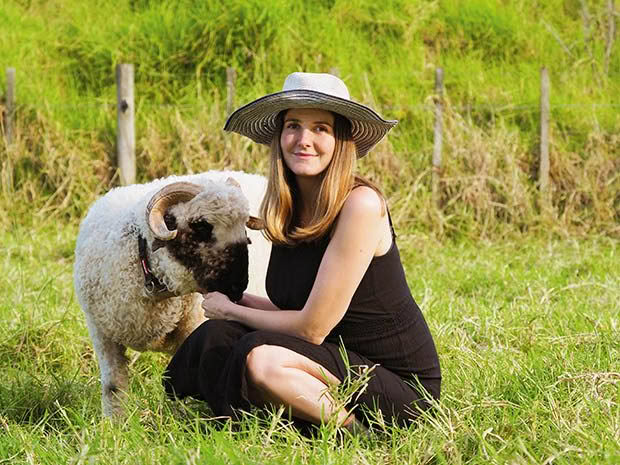
From a small farm in Northland, a young couple have amassed a huge Instagram following by sharing down-to-earth content about their new rural life with their family of adorable rescue animals.
Words: Michael Andrew Images: Tristan Burch
Who: Ruby Lee and Tristan Burch
Where: Paparoa, Northland
Land: 2.4 acres
What: Hobby homestead with rescue animals
Web: @manuka.valley.farm
Givealittle: givealittle.co.nz/cause/manuka-valley-farm
Listen to Michael Andrew’s chat with Ruby and Tristan on episode two of the permaculture and homesteading podcast, The Pumpkin.
There aren’t many New Zealand lifestyle block owners who have gained 80,000 followers on Instagram by posting about their animals. But Ruby and Tristan of Mānuka Valley Farm know what people want to see.
Having moved to their 2.4-acre block in Paparoa, at the north of the Kaipara Harbour in 2020, the couple have been documenting their journey on the land ever since, posting regular stories and reels of how two former city-slickers are creating a hobby homestead, growing food and caring for their menagerie of quirky rescue animals.
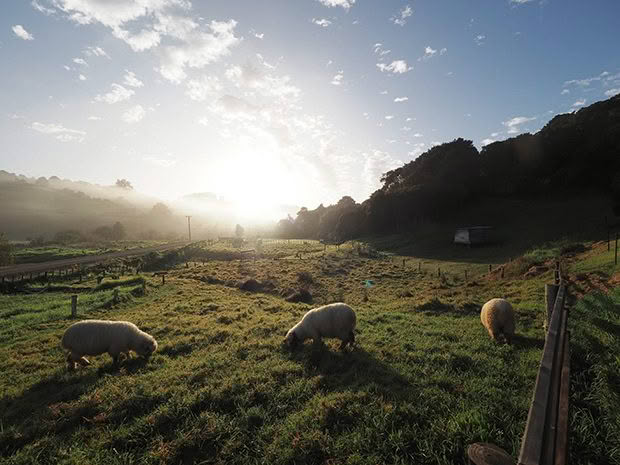
The farm’s three Valais Blacknose sheep, Ping, Pongo and Percy, grazing in the paddocks they share with three Dexter cattle. The rescue animals are a critical part of the regenerative approach taken on the farm.
Their timing couldn’t have been better. Amid pandemics, natural disasters and economic crises, people in cities across the world are hooked on the idea of gardening, keeping animals and finding the serenity that only country living can bring. They couldn’t get enough of Tristan and Ruby’s videos.
“We went from 1,500 to 76,000 followers over the course of about three weeks,” says Ruby. “And they’re not all from New Zealand – there are a lot of Americans, people from Canada. Four of our videos went viral.
“People are wanting to do this sort of thing, even just growing food in their backyard – especially with the price of food at the moment and as food scarcity continues to grow. We think we’re at the beginning of something big.”
THE CHILLI MOMENT
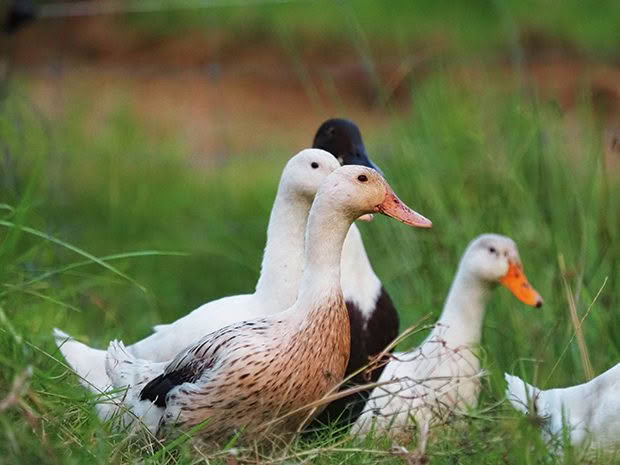
One of the most compelling aspects of Ruby and Tristan’s farm life is its relatability. Using their own journey as an example, the couple seek to show others that it is possible for those who have no farming experience to create a peaceful, relatively sustainable life on a rural property. It was only a few years ago that the pair were living a very typical city lifestyle in London – where Tristan is from – purchasing all of their food from the supermarket and growing disillusioned with the increasing cost and excessive plastic packaging used within the retail food system.
Ruby remembers the exact moment when their growing journey began. The pair had moved back to Wellington, Ruby’s hometown, and were in a New World shopping for produce when she noticed how expensive chillies had become. “It was $6 for two chillies and they were in a plastic wrap on a plastic tray. I just couldn’t justify buying them anymore. We decided to go across the road to the Palmers garden centre and buy a chilli plant. It was $20. And the plant provided chilies for a year and we covered the cost of the chilli plant within about a month.”
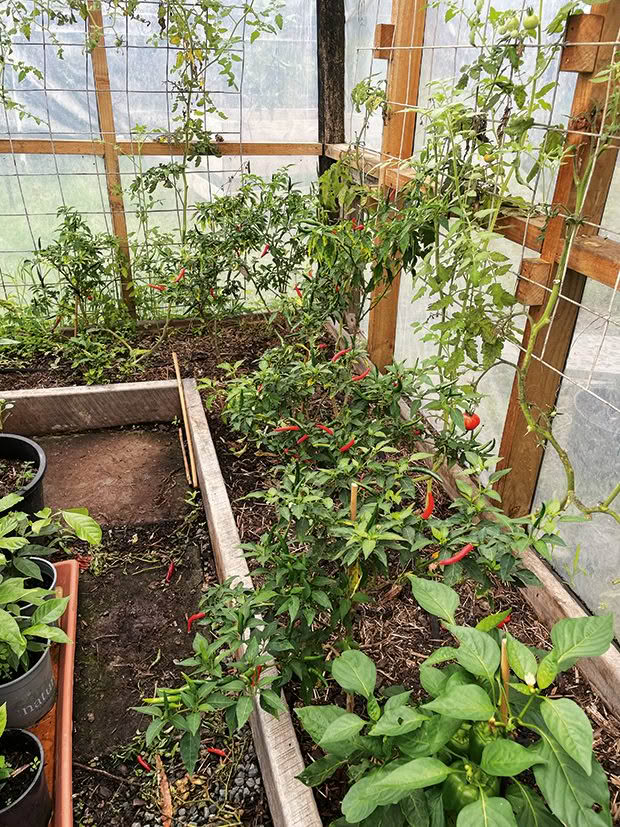
“It was just this realisation of how easy it was to avoid the plastic and know where your food was grown, and get a way bigger yield than going to the supermarket,” says Ruby. “It went from there and it just snowballed.”
This new knowledge, combined with their desire to reduce their environmental impact and avoid chemicals in their food, led them to create a small garden in their backyard, growing many of the herbs and small vegetables that they would usually purchase at the supermarket. At the same time, they started doing more research into organic gardening, permaculture and homesteading. They visited Twin Falls Nursery regularly – a permaculture operation in Northland owned by Ruby’s cousin and her husband – to learn about subtropical food forests and agroforestry.
But it was an online documentary that Tristan says provided the “final nail in the coffin,” of their old lives.
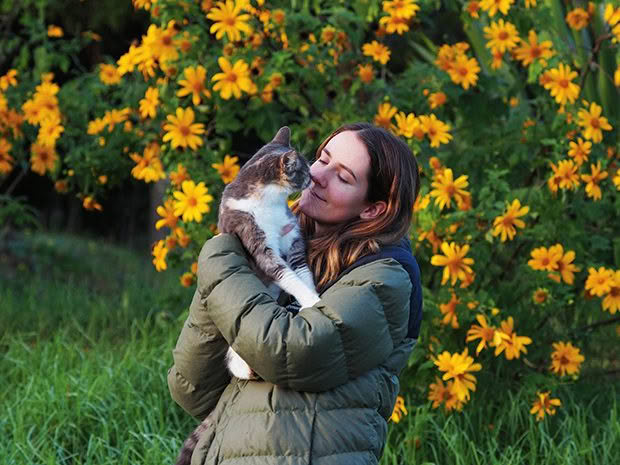
“We went to the UK to visit my family and we watched a documentary called The Biggest Little Farm. That took us over the edge,” he says.
“When we saw The Biggest Little Farm, all of a sudden it was like ‘we need lots of land and we want all the animals,’” Ruby adds. “We watched the film and we got about 10 minutes into it and I turned it off and said to Tristan, ‘we can do this’. And he said ‘yes we can’. And that was that.”
On the flight home, they started drawing their dream property on an aeroplane sick bag. Less than 10 months later, that basic sketch became a reality.
LEAVING THE CITY
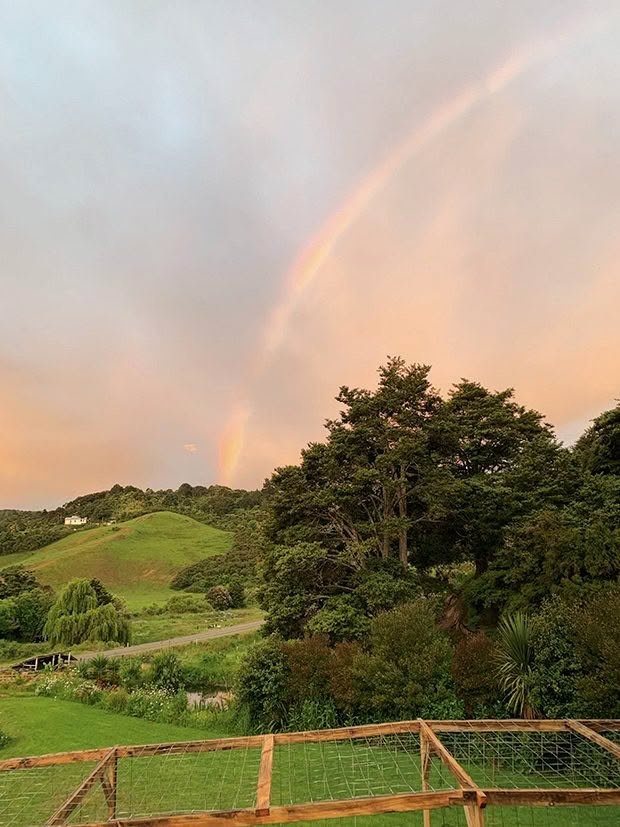
While the couple initially had their sights set on 10 acres, they had to make some compromises to get the purchase over the line. What they wanted was a north-facing property with a dwelling, enough space to have gardens and some livestock, a stream or water source, and not too far away from Ruby’s family and an airport, so that Tristan’s family could visit from overseas.
After a COVID-19 lockdown in 2020, they visited a 2.4-acre block in Northland with a retrofitted portacom as the main dwelling. It fitted the criteria, and they made an offer the following day. Financing the purchase, however, was a challenge in itself. Because Tristan, who works in advertising, is a UK national, and Ruby, who works as a toy inventor, makes the bulk of her income from overseas employers, the bank heavily scrutinised their finances and would only loan them a limited amount. They had to borrow the remainder from other sources to make up the deposit.
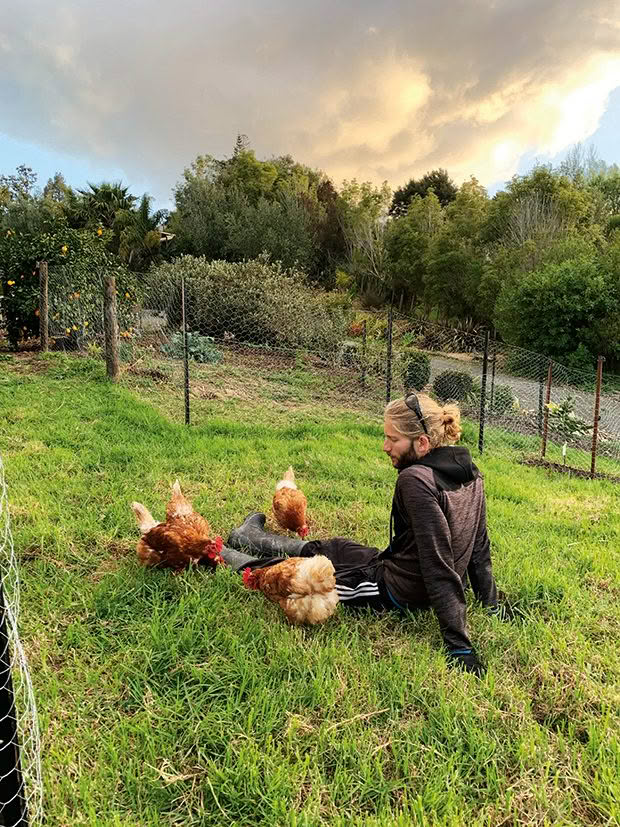
The bank kept them on their toes for two weeks but eventually came through with the financing, and the purchase was complete. The couple packed up their van with their belongings and two cats, and left Wellington for their new home. What ensued over the next 2.5 years was an epic journey of discovery, hard work and, most importantly, mistakes.
“We ended up doing what every permaculture book tells us not to do, which is to spread yourself too thin,” says Ruby. “But we couldn’t help ourselves.”
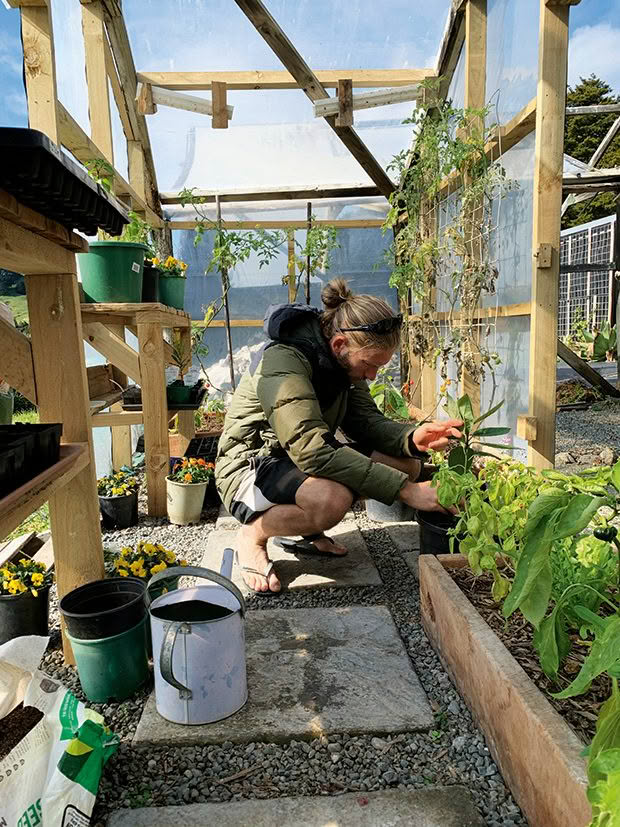
While the couple produce much of their own food, they don’t intend to pursue self-sufficiency as this would require far more time and energy than they can give.
“We’re our own worst enemies because we’re dreamers,” adds Tristan. “Around the time that we start finishing projects and start listing the things we want to do, all of a sudden we’re doing them and spending money on them and we haven’t even recovered from the first set of things.”
Bristling with zeal, the pair ploughed headlong into the land, making use of the extra space and existing rundown shade houses to plant extensive vegetable gardens and a food forest. While their dedication, and their site in a warm Northland valley, resulted in rapid growth and high yields, they quickly discovered that the land needed a lot of work to get it in shape. Not only did they have dry, clay-based soil, but previous owners had left huge piles of rubbish and debris buried underneath the old garden beds. After digging it up and filling a 9m³ skip, they then turned to improving the health of the soil. But for that, they would need animals.
THE RESCUERS
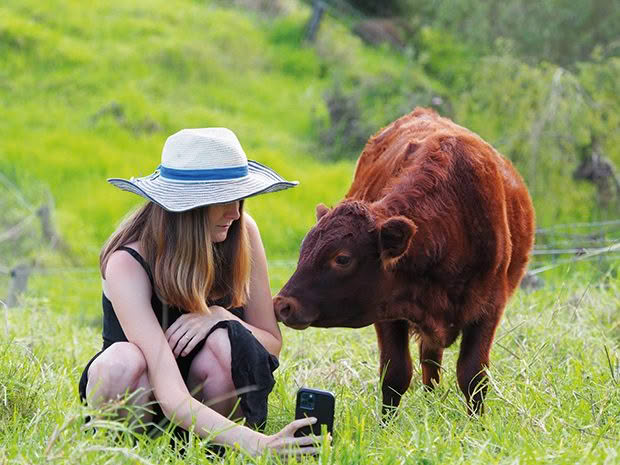
Although running stock was always part of the couple’s project, they had not thought about how or where they would source the animals. It was here that Ruby and Tristan’s two values of regenerative agriculture and animal welfare began to overlap. Having already adopted a number of rescue cats, the couple rehomed six ducks from another permaculture farm, a flock of post-laying chickens, three Valais Blacknose sheep and three Dexter cattle.
“We’re suckers for animals that people don’t want, so they’re not always the pretty ones,” Ruby says. “The sheep were part of a breeding programme for Valais Blacknose but the owner didn’t want to use them because they weren’t female or they didn’t have the pretty patterns. They were up for sale or going to the freezer so we decided to liberate them.
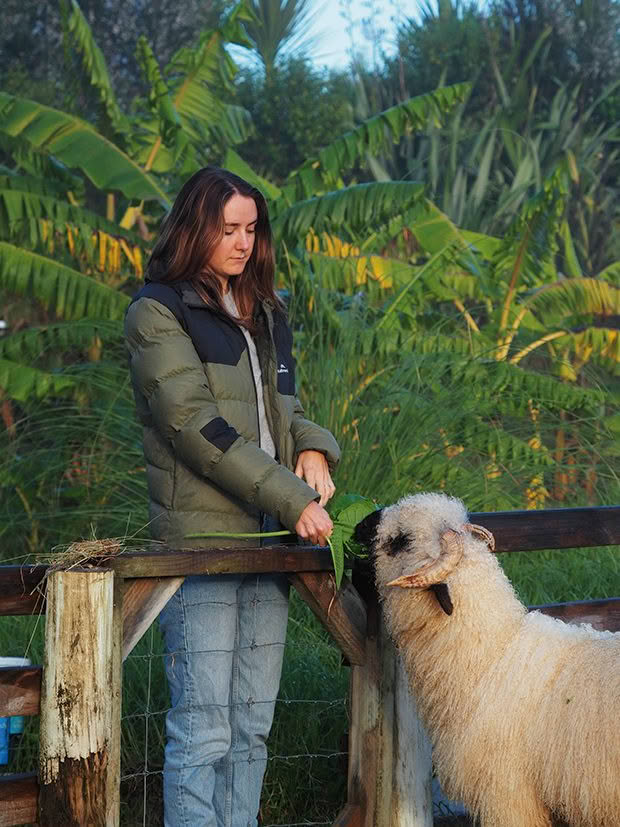
“Then we got a rescue cow who was off to the freezer. She finished breeding at 13 years old, and we thought, ‘well, cows can live to 20. Why don’t we give her a bit more life?’ And because she was pregnant, we had our first birth on the property, which is Koco. And then we decided that Koco needed a friend. So the last animal that we got is Pepper.”
“We didn’t intend to have a rescue farm, it was more like, why not? If we’re not breeding animals to eat, why not give animals a bit of life?”
Other than eating eggs from the chickens and ducks, the couple don’t treat any of their animals as a food source, even if they die of natural causes. They are “part of the family”, providing companionship, character and a crucial contribution to the homely atmosphere of the farm. While it may seem like a selfless decision on Tristan and Ruby’s part, they feel they are still deriving material resources from the animals’ participation in the farm’s ecosystem.
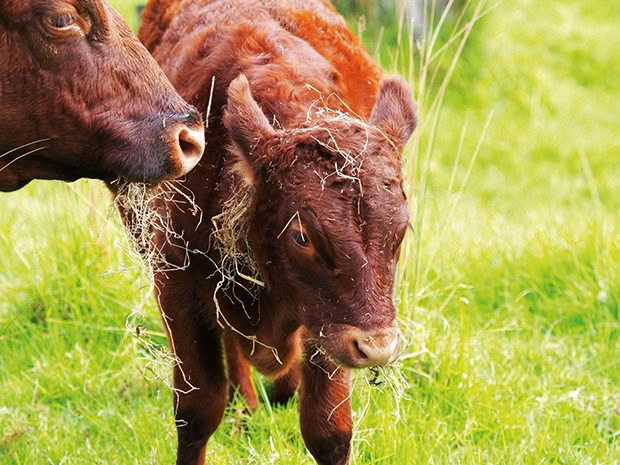
“Within permaculture, even if the animals are not providing food for us, they definitely have importance in the system,” says Tristan. “For example, the manure and urine of the cows and sheep enriches the land and goes in the compost, which then goes as part of our veggie garden, which then feeds us, the ducks and the chickens. We eat their eggs and they also act as slug and general pest control. They all have their roles within the farm.”
Like most endeavours on the property, the couple had to learn how to farm from scratch, using the wealth of information available on resources such as YouTube to properly care for their animals and understand their idiosyncrasies.
The couple made a decision to establish a division of labour, with Ruby working full time from home and Tristan devoting his time to the land. Untethered, he has been on an epic DIY crash course, learning how to build a cabin, implement a grey water system, trim hooves, regeneratively rotate stock and identify a range of stock diseases. It’s been a very long process, however, and many of the lessons have come through a costly and unexpected reliance on vet visits.
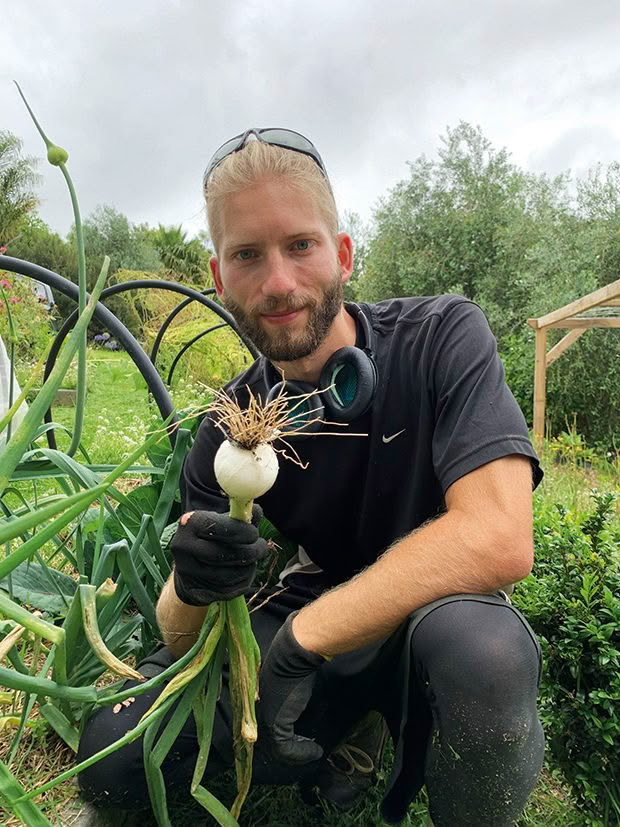
“We have been spending like crazy people for two years and every bit of money that comes in from either of us goes straight to the property and to the animals and vet bills,” says Ruby. “It costs a lot to learn.”
“You make a lot of mistakes when you don’t know anything,” says Tristan. “It’s important not to underestimate how hard it can be. So learning about the things that affect sheep’s feet such as dampness and water; providing an indoor hard ground shelter to put your sheep in every night so their feet don’t rot in the wet of Northland – things like this can mitigate how much money you have to spend on animals.”
FOR THE GRAM
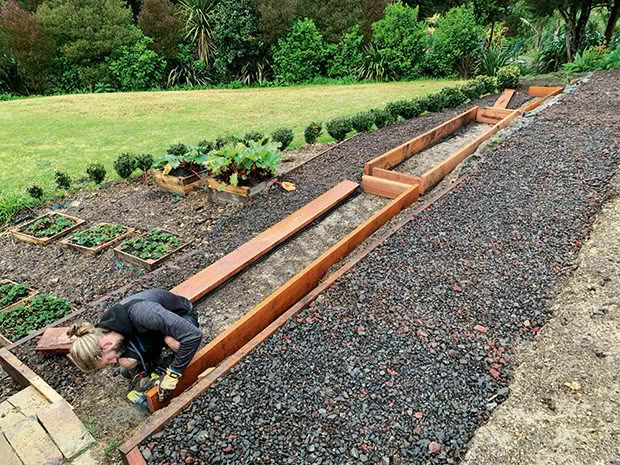
Despite the difficulty and cost of running the farm, the couple both agree that the enjoyment they get from the interactions is worth every cent. Both Dexters and Valais Blacknose are known as personable and charismatic breeds, providing hours of companionship and entertainment with their quirks and frolicking.
Ruby and Tristan have cultivated such strong bonds with the animals, that they are beginning to understand what the different animal calls mean.
“We now speak a little bit of cow, sheep, duck and chicken body language. This can be helpful to gain the animals’ trust. Learning to recognise the noises your animals make from a distance and what they mean. Like when Pongo the sheep says “I’m stuck again.” or Amelia says “I tipped my water over.”
The strong awareness of their animals’ nuances is a key part of what the couple share on social media.
View this post on Instagram
Unlike many homesteading and gardening Instagram accounts, Ruby and Tristan’s page does not aim to instruct people in the technical specificities of restoring the land, growing produce or raising livestock for food. They are, after all, relative beginners themselves. Instead, they tailor their content to provide a soothing and sentimental portrayal of farming life and the ever-tightening bonds with their animals. Followers of the account are able to form their own connections with the animals, learning their names and quirks, and ultimately feel that they are part of the project.
Ruby says this is a deliberate strategy to offset the intensity and overwhelming stimulus of Instagram. “Instagram can be quite an angsty place, so most of the comments and messages we get are from people saying things like ‘thank you so much for posting this wholesome, calm, nice content.’ Most of the comments we get are about the animals and the relationships they have with us and each other, which is really lovely and sweet.
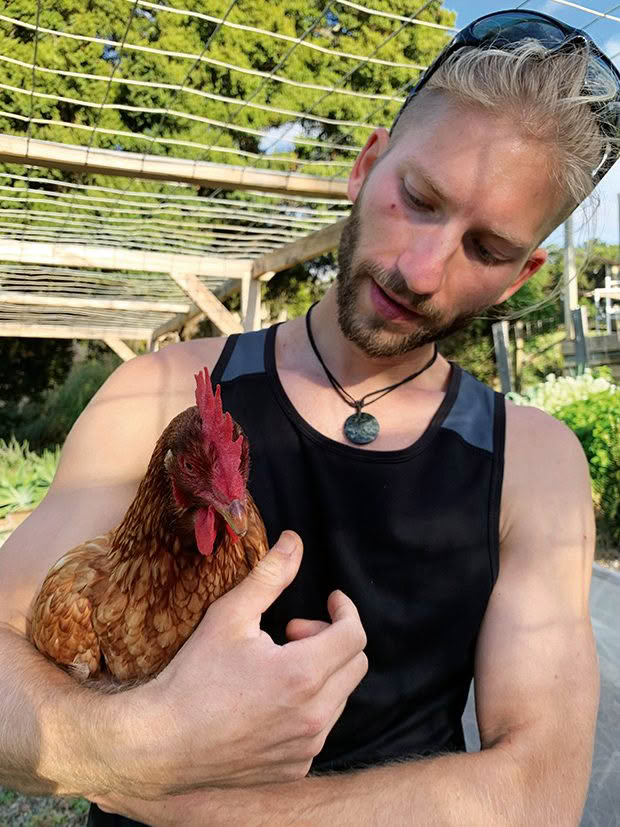
“As we were picking up followers, we were having people say that we’ve inspired them and they have similar dreams. Loads of people were telling us that they’re saving for this life and they watch our channel every single day and it makes them smile – that’s such a huge inspiration to us to keep posting.”
One of the most important messages they want to convey through social media is that people don’t need lots of experience to live this life.
“There’s no such thing as a green finger. You don’t need to really know anything because gardeners can learn by making mistakes.”
NOT A ‘DISNEY FILM’
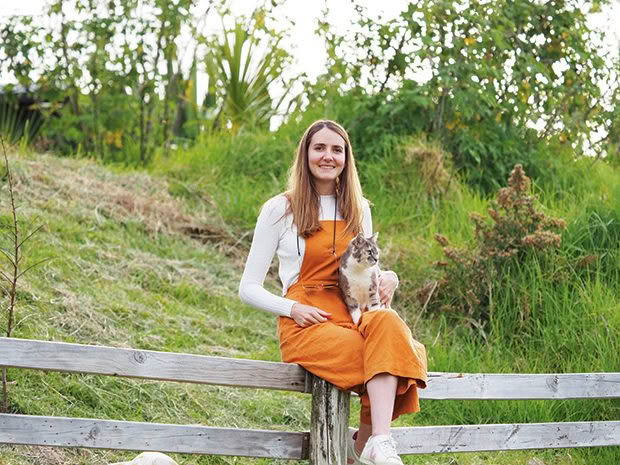
Despite the idealistic portrayal of farm life, the couple are also eager to explain that there’s a lot of hard work behind the scenes.
Plants die all the time, animals get sick, the property can be a money sink, and can feel isolated at times. It can be especially overwhelming when multiple things go wrong in succession and there’s no people around to talk with about it. The difficulty, Ruby says, is to try to convey those realities through Instagram while also showing that there are enormous benefits, such as the close relationships with the animals.
“Our Instagram page can sometimes look a bit like a Disney film, but there are definitely times where we’re so tired and stressed because it’s just been a month of everything going wrong, of plants dying and hooves falling apart. We’re honest about what we’re going through, but I think it’s hard to understand the reality of this kind of lifestyle until you’re actually living it.”
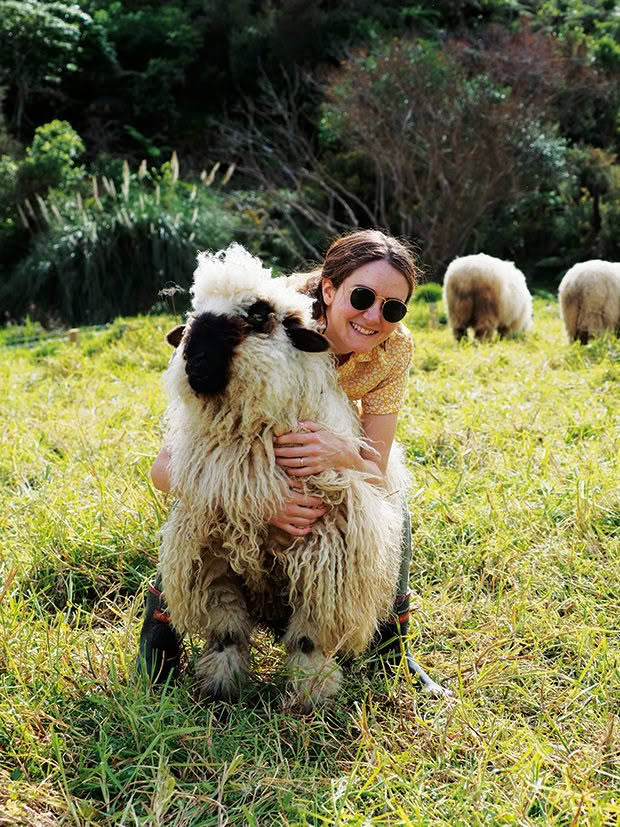
“We don’t have control of many things here,” says Tristan. “The idea of not being in control is actually quite alien to most people living in a city. But the reality is, when you accept that lack of control, you live a much more relaxed and open way of life. Some things there’s nothing you can do about, and other times you have to put the hard work in to fix things.”
But the acceptance of the vagaries and inevitable struggles of rural life has only made Ruby and Tristan stronger people – a real world example of townies who have embraced grit and gumption and taken on a huge job, while finding joy and comfort in the simple beauty of their farm.
“It’s huge character development,” says Ruby. “Both of us are not the same people we were two-and-a-half years ago at all.
That development is set to continue this year, with the couple welcoming their first child in June. In preparation for parenthood, the pair have gradually been adapting their systems, with Tristan moving back into employment and moving many of the farm jobs to the weekend. The couple have also been resisting the temptation to take on any new projects.
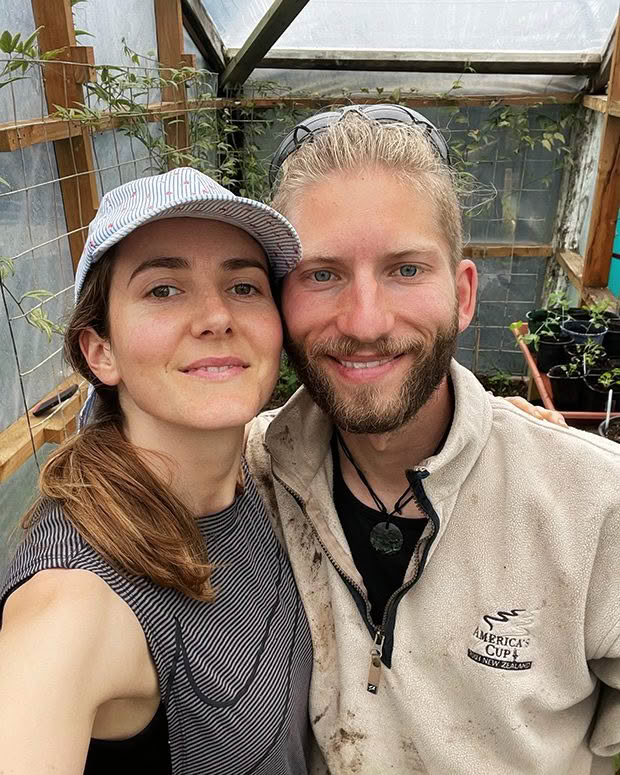
“We have definitely pulled back and restricted ourselves to doing necessary things, like sorting out the house for the baby,” says Tristan.
Although the new parents are bound to be busy with a whole new set of responsiblities as they enter the next phase in life, the change is consistent with the spirit of adaptation that they’ve built their new lives on.
“It’s always going to be hard work to a degree,” says Tristan. “It’s never going to just suddenly be easy. But on the other side of that coin, eating your own food and having relationships with the animals – it makes it all worth it.”
Love this story? Subscribe now!
 This article first appeared in NZ Lifestyle Block Magazine.
This article first appeared in NZ Lifestyle Block Magazine.
